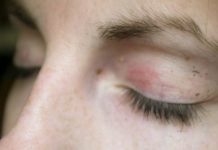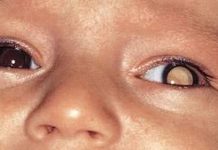In this comprehensive guide, we delve into the various types of pink eye (conjunctivitis) and their respective treatments. Pink eye is a common eye condition that can affect people of all ages, causing discomfort and potential complications. Understanding the different types and their appropriate treatments is crucial for maintaining eye health and preventing the spread of this contagious ailment.
Pink eye, medically known as conjunctivitis, is an inflammation of the conjunctiva, the thin, transparent layer covering the white part of the eye and the inner surface of the eyelids. This condition can be caused by viruses, bacteria, allergies, or irritants, leading to distinctive symptoms and treatment approaches.
Types of Pink Eye
Viral Pink Eye
It is often associated with upper respiratory infections and presents with symptoms such as:
- Redness: The eye appears bloodshot due to inflammation.
- Watery Discharge: Excessive tearing, making it appear as though the eye is weeping.
- Itchiness: A persistent urge to rub the eyes.
Treatment
Viral pink eye typically resolves on its own within one to two weeks. To alleviate discomfort, patients can use artificial tears and apply warm compresses. Contagiousness can be reduced by practicing good hygiene, such as frequent handwashing and avoiding contact with the infected person.
Bacterial Pink Eye
Bacterial conjunctivitis is caused by bacteria and tends to affect both eyes simultaneously. Key characteristics include:
- Thick, Greenish-Yellow Discharge: A notable symptom distinguishing bacterial pink eye.
- Crusting: Formation of crusts or scales around the eyelids, especially upon waking.
- Redness: Similar to viral pink eye, there is visible eye redness.
Treatment
Antibiotic eye drops or ointments prescribed by a healthcare professional are typically necessary to treat bacterial pink eye effectively. It’s essential to complete the entire course of antibiotics, even if symptoms improve earlier.
Allergic Pink Eye
Allergic conjunctivitis results from exposure to allergens, such as pollen, dust, or pet dander. Symptoms often include:
- Itching: Severe itching in the eyes.
- Watery Discharge: Excessive tearing, usually accompanied by sneezing and nasal congestion.
- Redness: Eyes may appear pinkish or red.
Treatment
The primary focus of treating allergic pink eye is allergen avoidance. Over-the-counter antihistamine eye drops can provide relief from symptoms.
Irritant-Induced Pink Eye
Irritant conjunctivitis occurs when the eye exposed to irritants like smoke, pollution, or chemical substances. Symptoms include:
- Burning Sensation: A burning or stinging feeling in the eyes.
- Excessive Tearing: Watery eyes as a response to the irritant.
- Redness: The eye becomes red and inflamed.
Treatment
The key to resolving irritant-induced pink eye is the removal or avoidance of the irritant. Artificial tears can help soothe the eyes and flush out any remaining irritants.
Prevention and Hygiene
- Practice Proper Hand Hygiene: Regular handwashing can reduce the risk of infection.
- Avoid Touching Eyes: Minimize touching your eyes, especially with unwashed hands.
- Clean Contact Lenses: If you wear contact lenses, follow proper hygiene and cleaning routines.
- Maintain a Clean Environment: Ensure that surfaces you frequently touch are regularly cleaned to prevent the spread of bacteria or viruses.
Disease or infection
Eye redness, stinging, tears, and discharge are symptoms of this condition, which can impact either eye. Infections (viral or bacterial), allergies, and environmental irritants are among the many potential causes of pink eye.
Pink eye symptoms might differ from one cause to another, however some typical indicators are:
- Inflammation of the inner eyelid or the whites of the eye.
- The eye’s drainage or increased tears.
- Pain or reddening in the eye socket.
- The eyelids swell.
- Light sensitivity.
- Skin irritation around the eyes, most often first thing in the morning.
The most common ways that pink eye, which can be caused by bacteria or viruses, spreads are through direct or indirect contact with infected hands, surfaces, or personal items such as cosmetics brushes or towels.
The root cause is usually the determining factor in treatment. Conjunctivitis caused by viruses typically goes away after a week or two, while conjunctivitis caused by bacteria may necessitate the use of antibiotic eye drops or ointments. Antihistamine eye drops or staying away from allergens are ways to control allergic conjunctivitis.
In order to keep pink eye at bay, it’s crucial to adhere to excellent hygiene practices including washing hands often, not touching your eyes, and not sharing personal belongings. See a doctor for an accurate diagnosis and treatment plan if you think you have pink eye or if your symptoms are severe.
Conclusion
Understanding the various types of pink eye and their respective treatments is essential for managing this common eye condition effectively. Whether it’s viral, bacterial, allergic, or irritant-induced, prompt recognition and appropriate care can help alleviate symptoms and prevent its spread. Remember that if you suspect you have pink eye, consulting a healthcare professional is crucial for accurate diagnosis and treatment. Take proactive steps to protect your eye health and maintain clear, comfortable vision.
Eye Exams: Ensuring Visual Health for All Students


